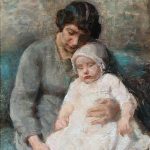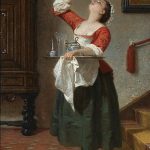
Wilhelm Busch, often celebrated as the grandfather of modern comics, was a German painter, poet, and illustrator whose satirical works laid the foundation for contemporary comic strips. Born on April 15, 1832, in Wiedensahl, a small village in Lower Saxony, Germany, Busch’s influence stretches far beyond his rural beginnings, leaving a lasting imprint on art and literature. While his satirical drawings and stories have earned him widespread recognition, his work as a painter also deserves considerable attention.
Wilhelm Busch was the eldest of seven children. His father, Friedrich Wilhelm Stümpe, was a merchant and farmer, and his mother, Henriette Kleine Stümpe, managed the household. From an early age, Busch showed an interest in drawing, often sketching the countryside and its inhabitants. His idyllic yet modest upbringing in Wiedensahl, amidst the rolling hills and picturesque landscapes of Lower Saxony, played a crucial role in shaping his artistic sensibilities.
At the age of nine, Busch was sent to live with his uncle, the Reverend Georg Kleine, in Ebergötzen. His uncle recognized his nephew’s talent and supported his artistic endeavors. Busch attended the Polytechnic School in Hanover at the age of 15, where he studied mechanical engineering. However, his true passion lay in the arts, and in 1851, he enrolled at the Academy of Fine Arts in Düsseldorf. Here, Busch’s talent for satire and caricature began to blossom, although his formal training as a painter also laid the groundwork for his future artistic endeavors.
Artistic Development and Early Works
After a brief and somewhat disillusioning stint in Düsseldorf, Busch moved to Antwerp and then to Munich in 1853, where he attended the Royal Academy of Fine Arts. Munich’s vibrant art scene greatly influenced Busch, exposing him to various artistic styles and movements. Despite his formal training, Busch found academic art restrictive. He was more drawn to the expressive potential of caricature and satire.
Busch’s first significant breakthrough came in 1859 when he began working with the satirical magazine “Fliegende Blätter” (Flying Leaves). His contributions, characterized by sharp wit and humorous illustrations, quickly gained popularity. However, it was his collaboration with the publisher Kaspar Braun that would lead to his most famous works.
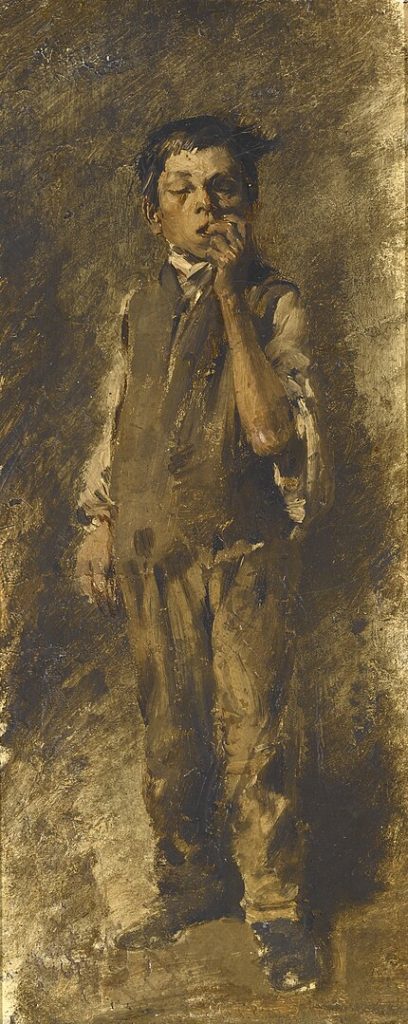
In 1865, Wilhelm Busch published “Max und Moritz,” a series of seven illustrated stories about two mischievous boys who engage in various pranks, ultimately meeting a grim fate. The book was an instant success, praised for its innovative combination of text and image. The rhyming couplets and vivid illustrations captured the public’s imagination, making “Max und Moritz” a seminal work in the history of comics and children’s literature.
“Max und Moritz” not only showcased Busch’s talent for storytelling but also highlighted his keen observations of human nature and societal norms. The book’s dark humor and moral lessons resonated with readers, solidifying Busch’s reputation as a master satirist. To this day, “Max und Moritz” remains a classic, translated into numerous languages and influencing countless artists and writers.
Busch the Painter
While Wilhelm Busch’s illustrated stories brought him widespread fame, his paintings are a testament to his versatility and skill as an artist. Throughout his career, Busch produced a substantial body of work in oils and watercolors, often depicting rural landscapes, still lifes, and scenes of everyday life. His paintings reveal a keen eye for detail and a deep appreciation for the natural world, influenced by his upbringing in the countryside.
Busch’s early paintings were influenced by the Romantic and Realist movements, reflecting the academic training he received in Düsseldorf and Munich. He often used a muted palette, focusing on the interplay of light and shadow to create atmospheric scenes. His landscapes, in particular, capture the tranquility and beauty of rural Germany, with meticulous attention to the textures and colors of nature.
As Busch’s style evolved, he began to experiment with more expressive and spontaneous techniques. His later works, characterized by bolder brushstrokes and a more vibrant use of color, reflect his interest in Impressionism and other contemporary movements. Despite his success as an illustrator, Busch never abandoned his passion for painting, continuing to produce works that showcased his artistic range and depth.
Later Works and Stylistic Evolution
Following the success of “Max und Moritz,” Busch continued to produce a prolific array of illustrated stories, poems, and caricatures. His works often featured recurring themes of human folly, hypocrisy, and the absurdities of everyday life. Some notable works from this period include “Hans Huckebein, der Unglücksrabe” (Hans Huckebein, the Unlucky Raven) in 1867, and “Die fromme Helene” (Pious Helene) in 1872.
Busch’s style evolved over the years, becoming more refined and complex. His illustrations, characterized by bold lines and dynamic compositions, conveyed a sense of movement and emotion that was groundbreaking for the time. Similarly, his paintings grew more sophisticated, with an increasing emphasis on capturing the fleeting moments of light and color.
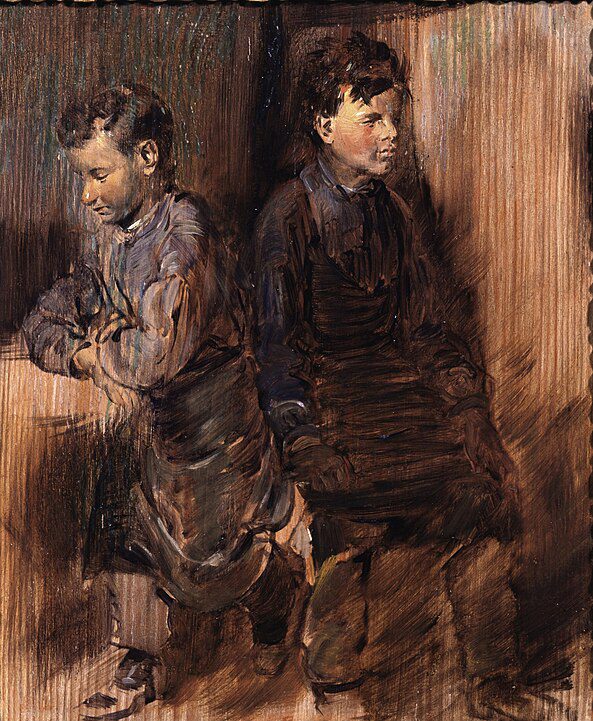
Wilhelm Busch’s contributions to art and literature cannot be overstated. His pioneering use of sequential art and integration of text and image laid the groundwork for the modern comic strip and graphic novel. Artists such as Rudolph Dirks, the creator of “The Katzenjammer Kids,” and even modern cartoonists like Art Spiegelman have acknowledged Busch’s influence on their work.
Beyond comics, Busch’s satirical approach and keen social commentary have left a lasting impact on German literature and culture. His works continue to be celebrated for their wit, humor, and insightful critique of human nature. Museums dedicated to his life and work, such as the Wilhelm Busch Museum in Hanover, attract visitors from around the world, preserving his legacy for future generations.
Personal Life and Later Years
Despite his public success, Wilhelm Busch’s personal life was marked by a degree of solitude and introspection. He never married and had no children, devoting most of his time to his art and writing. Busch spent his later years in Mechtshausen, a small village in Lower Saxony, where he lived with his sister Fanny. Here, he continued to write and paint, drawing inspiration from the tranquility of rural life.
In his later years, Busch’s works took on a more reflective and philosophical tone. He explored themes of mortality, the passage of time, and the search for meaning in an increasingly complex world. His paintings from this period often depicted serene landscapes and intimate still lifes, showcasing his continued dedication to capturing the beauty of the natural world.
Wilhelm Busch passed away on January 9, 1908, in Mechtshausen. His death marked the end of an era, but his influence continues to resonate. Today, Wilhelm Busch is remembered not only as a pioneer of the comic strip but also as a brilliant satirist and painter whose works offer a timeless critique of society.
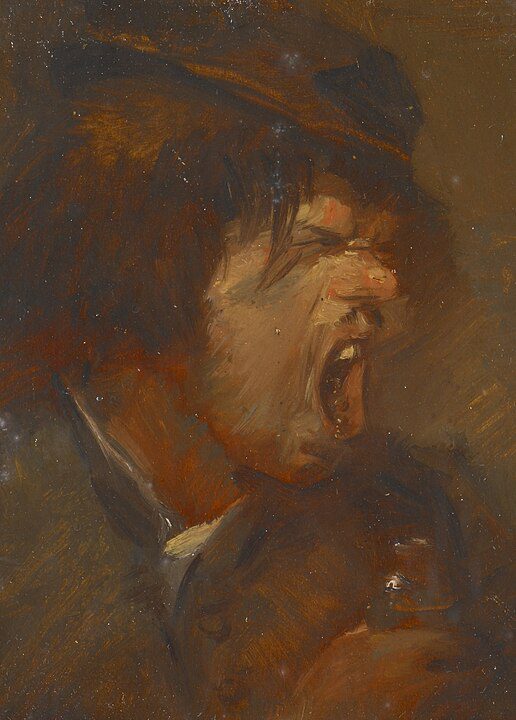
Wilhelm Busch’s life and career were characterized by a relentless pursuit of artistic expression and a keen understanding of human nature. From his humble beginnings in Wiedensahl to his status as a celebrated figure in art and literature, Busch’s journey is a testament to the power of creativity and the enduring appeal of satire. His legacy lives on through the countless artists and writers he has inspired, ensuring that his contributions to the world of art, comics, and painting will never be forgotten.



